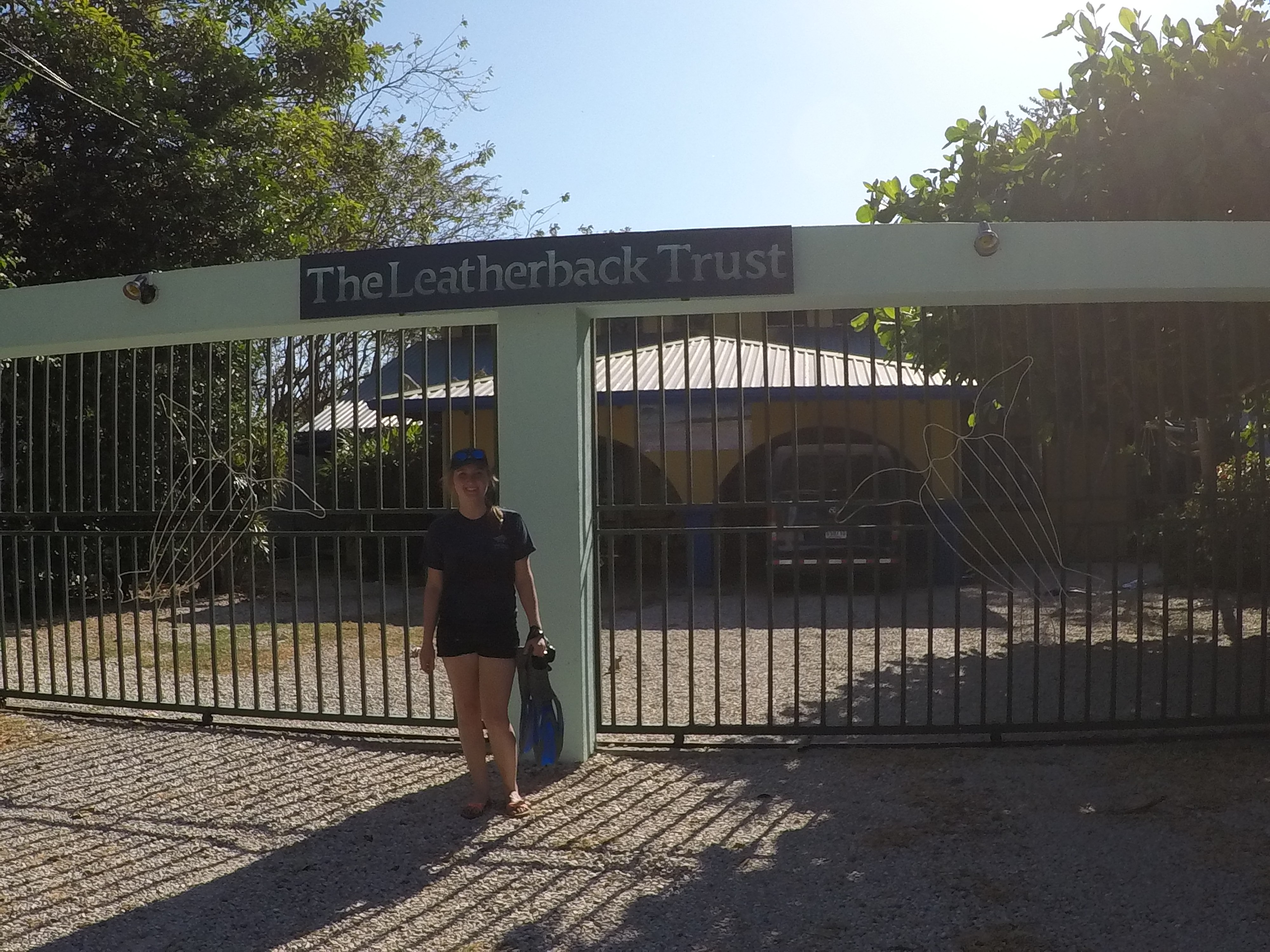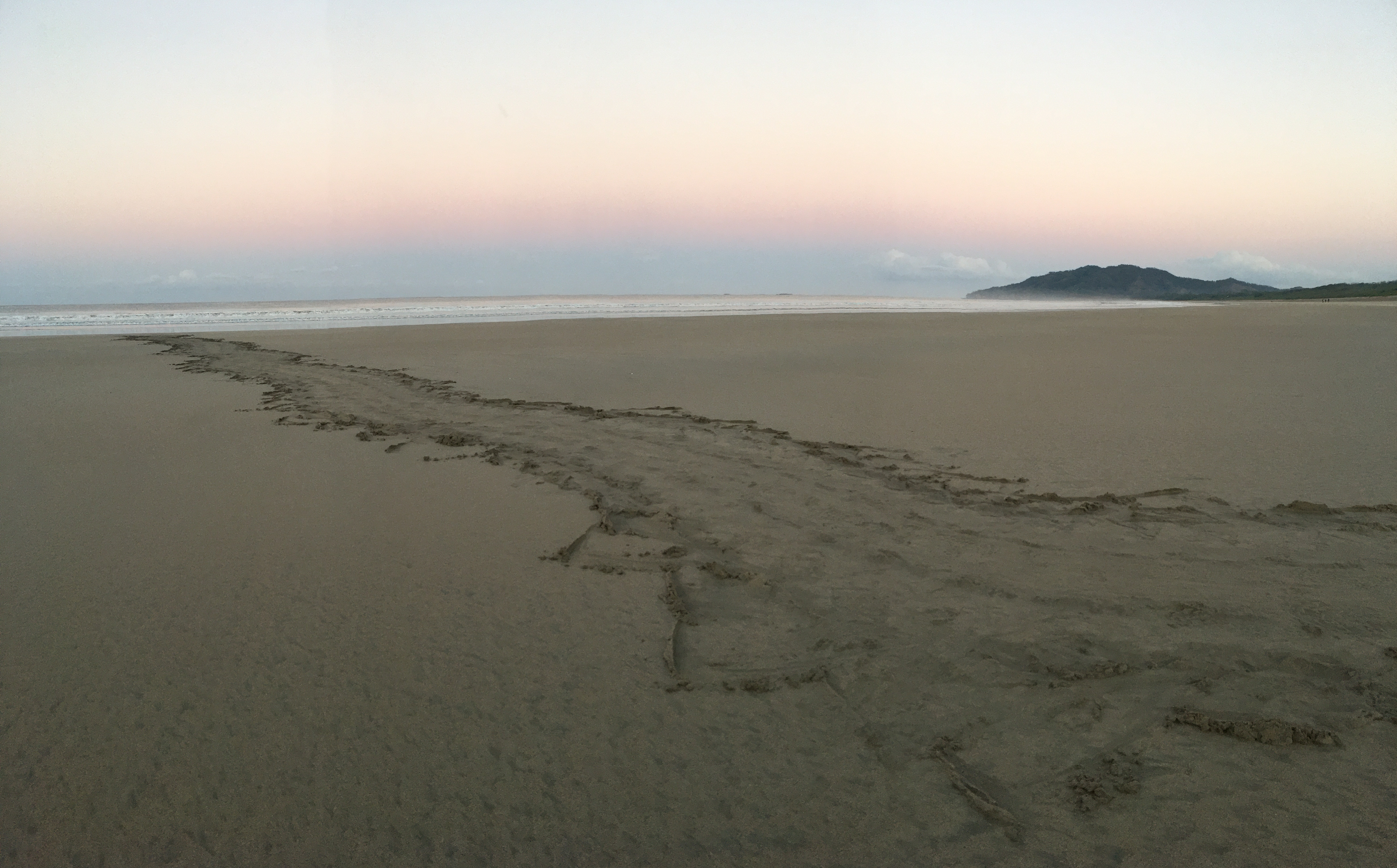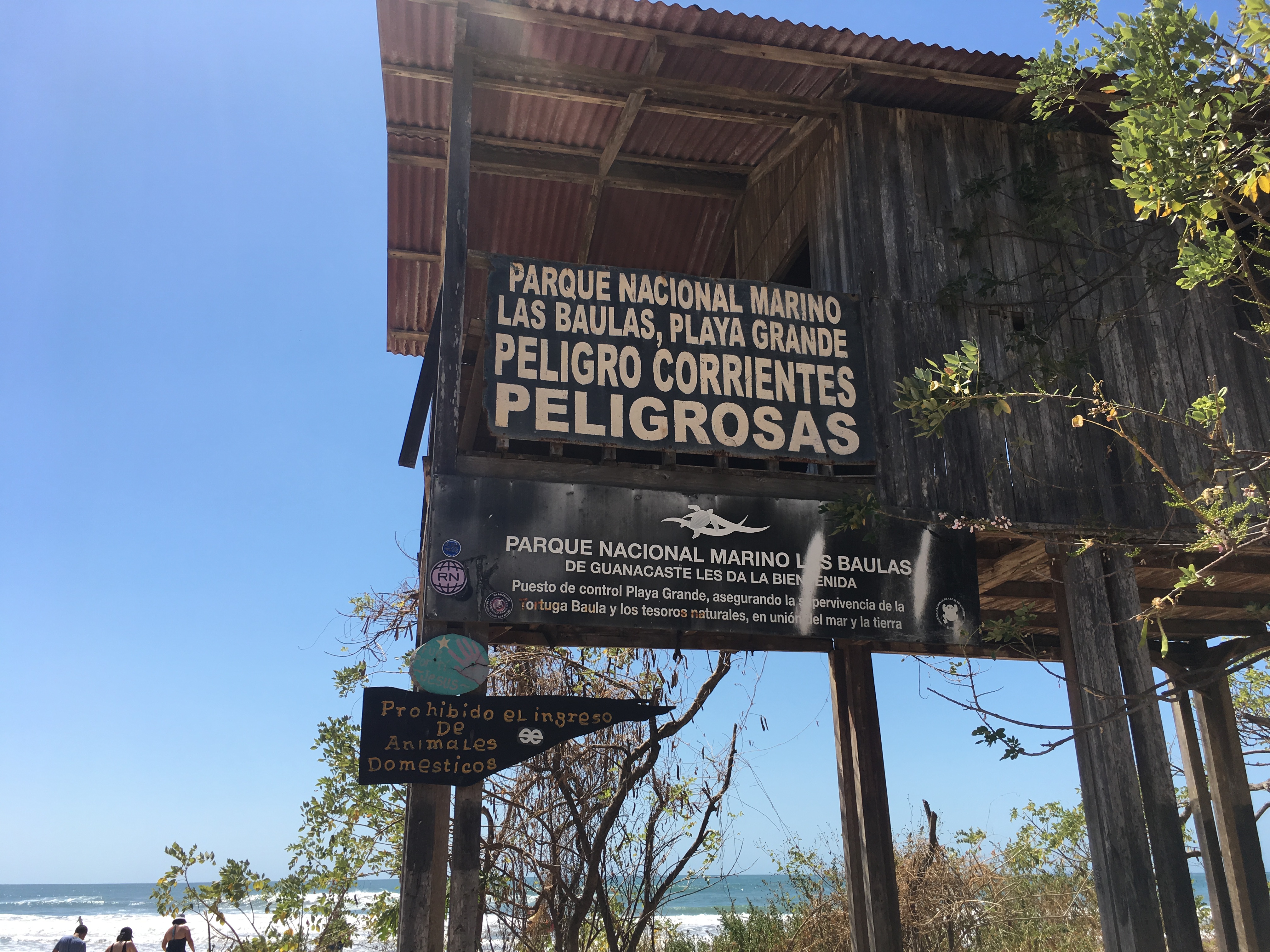Saving Leatherback Sea Turtles (Part 2)
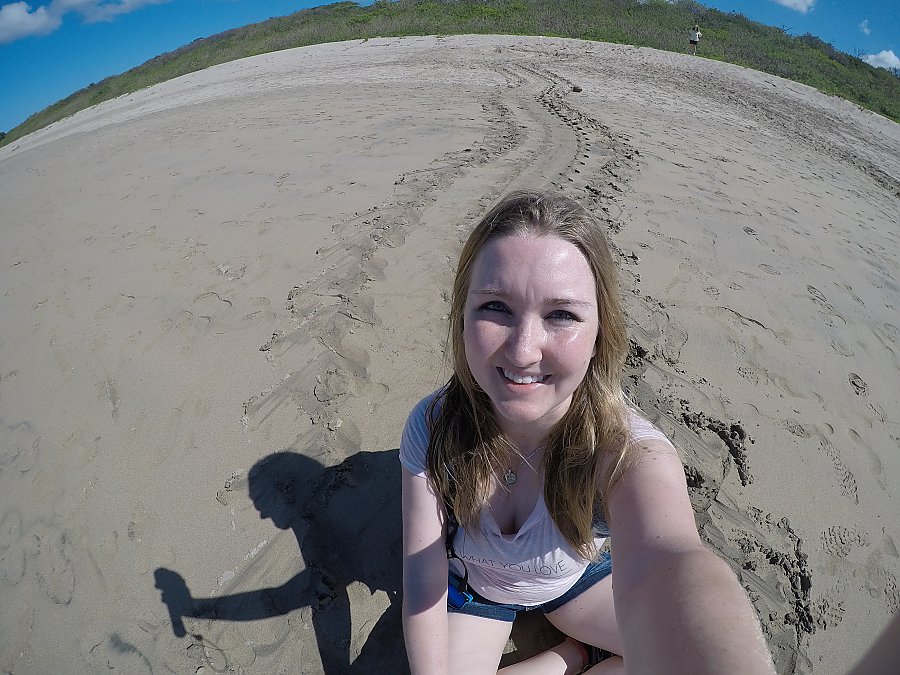
In Focus
Tuesday, March 28, 2017
Last week Senior Aquarist Lauren Harper told us about hatchery watch with The Leatherback Trust. This organization is based in Costa Rica and works to conserve the critically endangered leatherback sea turtle.
Today she shares her experience witnessing a leatherback sea turtle nesting. Lauren took the photo above of the sea turtle’s tracks to commemorate this life-changing moment. It has inspired her to raise awareness about issues affecting sea turtles.
Most people experience highlights throughout the span of their career. I just experienced one of mine when I got the once-in-a-lifetime opportunity to help save sea turtles!
To catch you up, I went on an Earthwatch Expedition to Costa Rica earlier this year thanks to a generous Aquarium donor. There I helped Nathan Robinson and a team of scientists gather information on leatherback sea turtles.
Though I worked a few hatchery shifts, I spent most of my nights with a biologist on beach patrol. We walked back and forth across the beach for six hours and looked for sea turtles coming up to nest. Sometimes we would come across the tracks of a sea turtle as in the photo above.
Leatherback nesting is most active around high tide because the high water makes it easier for them to get up on the beach. While I was there, the shifts were all very late at night because high tide was around 3:00 a.m. That said, I was more than excited to be up at all hours of the night just to catch a glimpse of the magnificent leatherback sea turtle!
Since the late 1980s researchers have recorded a steep decline in the leatherback population due to human activity. In fact, there were 1,504 turtles coming up on Playa Grande to nest every ten days from November until March during the 1988/89 nesting season. When I arrived in late January, they had only recorded eleven nesting females for the season so far.
On my first beach patrol, we spotted a dark blob coming out of the water around midnight. Even though there were so many stars and the Milky Way was streaking across the sky, it was incredibly dark, and we could barely make out the shape. As we slowly inched closer, we could see that it was a leatherback sea turtle!
For the next thirty minutes, we kept our distance as she hauled her enormous body out of the water using her elongated flippers. She moved slowly up the beach and eventually found the spot where she wanted to dig her nest. Then, she lowered herself into the sand by shifting it around. Eventually, she began to dig.
Nesting is an instinctual behavior. Sea turtles dig in a rhythmic pattern, alternating between left and right flippers. Her flippers were so dexterous! She formed them into a shape that resembled a scoop that was extremely effective for hauling sand out.
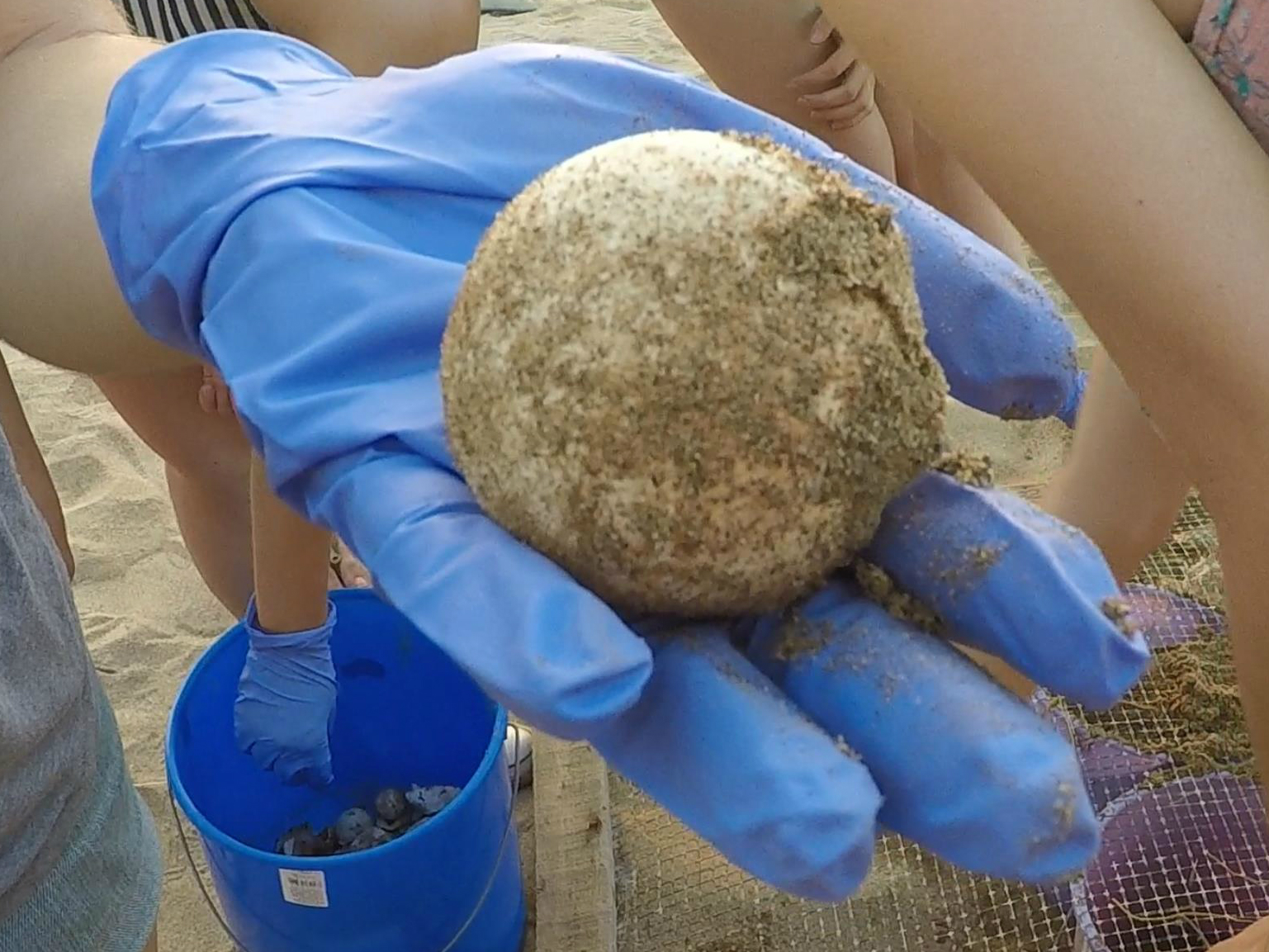
Once the hole was big enough—and much deeper than my arm could reach at about 27 inches deep—she started to lay her eggs. I was in charge of counting the eggs, and the final count clocked in at seventy-nine eggs! They were all about the size of a large billiard ball.
While counting, I had to place a thermocouple into the nest. This device would help scientists take the temperature of the nest in the coming weeks. We also took the leatherback’s measurements; her shell alone was 5 feet long! Typically, scientists have previously tagged these turtles with a microchip, so were able to scan her for identification purposes.
Once the sea turtle finished laying her eggs, she covered them up with sand and patted it down to keep the eggs safe. Finally, she spent an hour camouflaging the area by flinging sand everywhere. It was fascinating to watch her try to throw off predators!
The nesting process took about two hours and ended around 2:00 in the morning. After all of the leatherback’s effort, nothing was more satisfying than watching the moment the water hit her as she crawled back into the sea.
Though I should have been exhausted at this time of night, the event had me buzzing with excitement! It truly was a life-changing experience to see a leatherback up close and get a front row seat to the nesting process. I was in awe of nature, our ocean, and these critically endangered animals.
This trip has inspired me to continue working to save the leatherback sea turtles by sharing their story and raising awareness of the adverse effects of human activity on marine animals. Small actions—like avoiding single-use plastics—can make a big difference.


